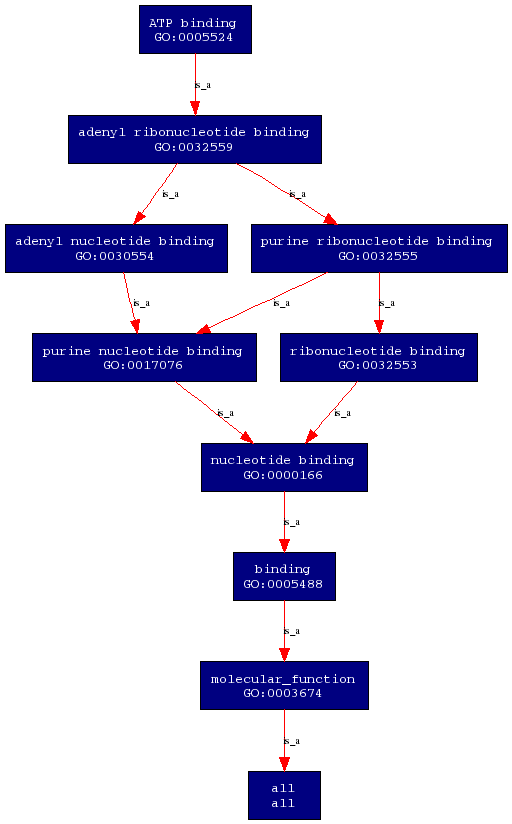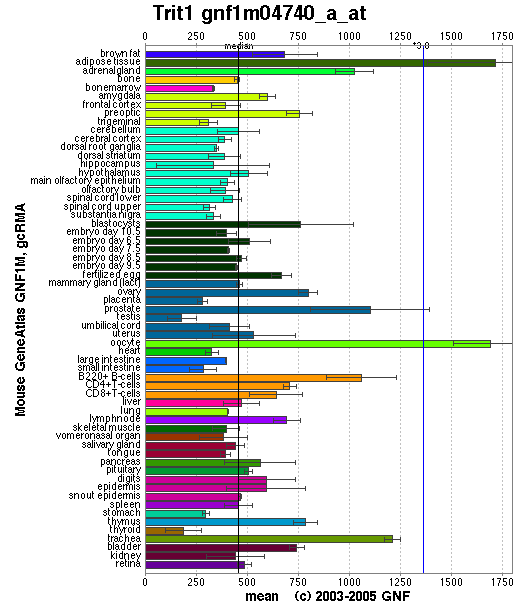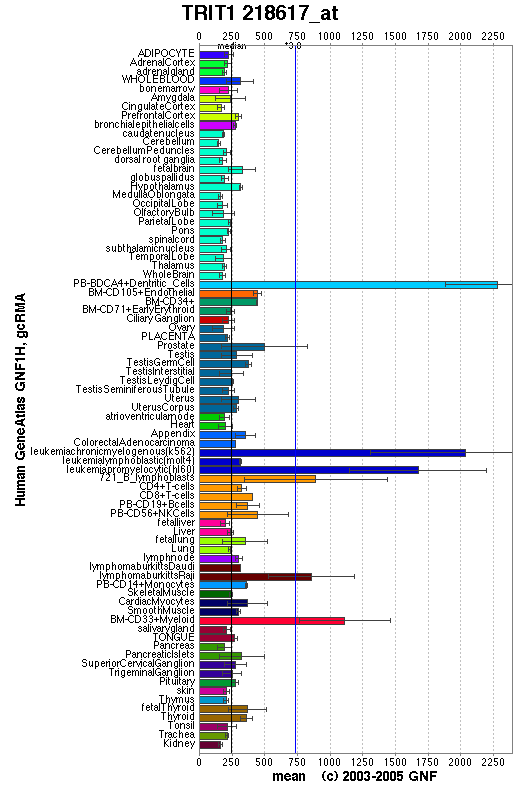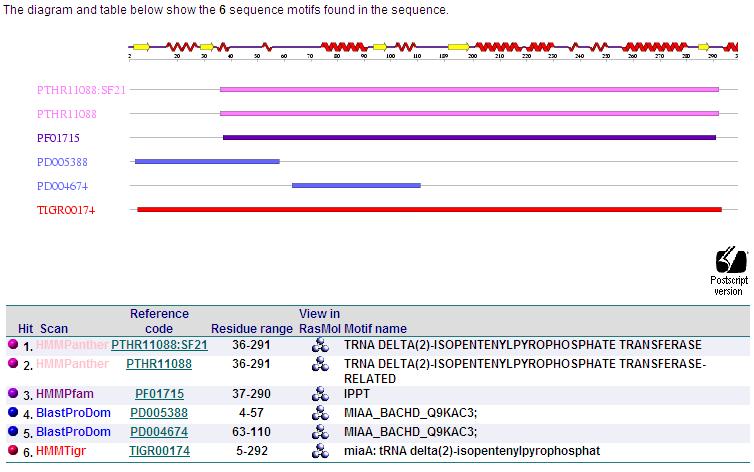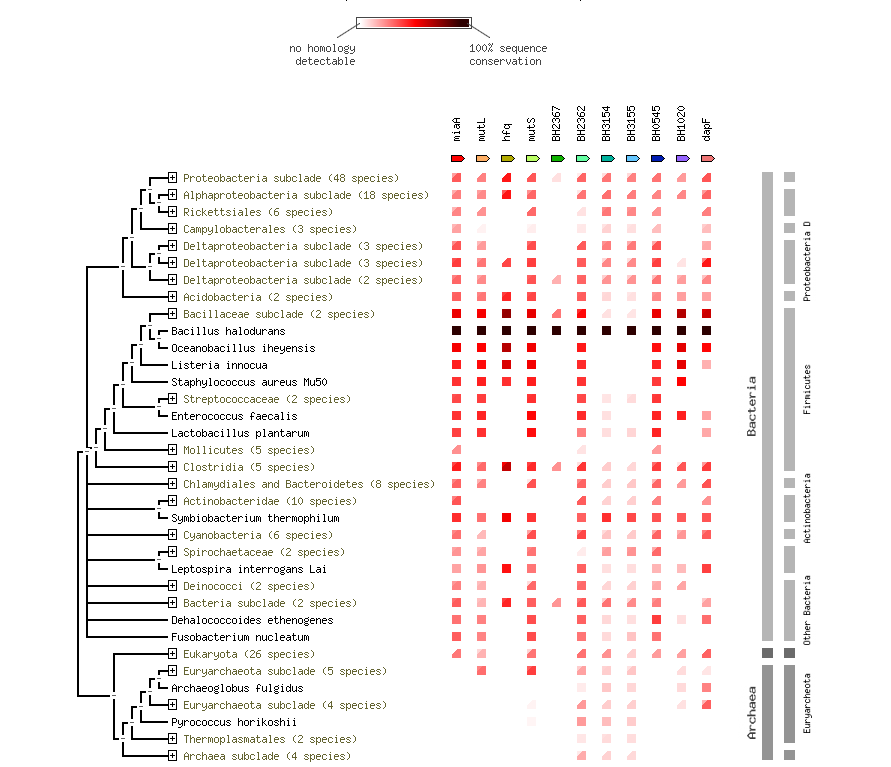Functional analysis of 2qgn: Difference between revisions
Choojinhsien (talk | contribs) |
No edit summary |
||
| Line 22: | Line 22: | ||
==Motif search== | |||
The C2-H2 Zinc finger motif is found in human tRNA-IPT. This may contribute to the enzyme's function. This motif is commonly found in nucleic acid-binding proteins and is composed of 25 to 30 amino acid residues. | |||
A schematic representation of a zinc finger domain is shown below: | A schematic representation of a zinc finger domain is shown below: | ||
Revision as of 11:43, 3 June 2008
Molecular function and biological processes of this enzyme was obtained from the ProKnow server. Molecular function of this enzyme is ATP binding. This means that the enzyme interacts selectively with ATP at the 5'end and acts as a universally important coenzyme and enzyme regulator. On the other hand, the biological process of this enzyme is tRNA modification. This involves the covalent alteration of one or more nucleotides within the tRNA, thus leading to a change in the properties of the tRNA.
Molecular Function
Biological Process
Localisation of Expression
Motif search
The C2-H2 Zinc finger motif is found in human tRNA-IPT. This may contribute to the enzyme's function. This motif is commonly found in nucleic acid-binding proteins and is composed of 25 to 30 amino acid residues.
A schematic representation of a zinc finger domain is shown below:
x x
x x
x x
x x
x x
x x
C H
x \ / x
x Zn x
x / \ x
C H
x x x x x x x x x x
http://ca.expasy.org/cgi-bin/nicedoc.pl?PDOC00028
GENOMIC CONTEXT In bacteria, the gene encoding this enzyme is known as miaA while the human and S. cerevisaea is TRIT1 and mod5 respectively. Although gene name differ in different organisms, they all synthesize enzyme of the same function.
Sequence Motif
Functional partners of tRNA isopentenyl transferase
- Input protein - miaA : tRNA delta(2)-isopentenylpyrophosphate transferase (IPP transferase) (Isopentenyl-diphosphate-tRNA isopentenyltransferase) (IPTase) (IPPT) (314 aa)(Bacillus halodurans)
- mutL : DNA mismatch repair protein mutL (637 aa)
- hfq : Protein hfq {UniProtKB/Swiss-Prot-Q9KAC4} (78 aa)
- mutS : DNA mismatch repair protein mutS (865 aa)
- BH2367 : BH2367 protein {UniProtKB/TrEMBL-Q9KAC2} (256 aa)
- BH2362:BH2362 protein {UniProtKB/TrEMBL-Q9KAC7} (418 aa)
- BH3154 : Protease specific for phage lambda cII repressor (310 aa)
- BH3155: Protease specific for phage lambda cII repressor (319 aa)
- BH0545 :BH0545 protein {UniProtKB/TrEMBL-Q9KFD6} (157 aa)
- BH1020 : BH1020 protein {UniProtKB/TrEMBL-Q9KE38} (391 aa)
- dapF : Diaminopimelate epimerase (EC 5.1.1.7) (DAP epimerase) (286 aa)
Occurence
This protein is conserved in different organisms. Functional partners often have similar occurence patterns. This view shows the presence or absence of linked orthologous groups across species. Orthologous groups are listed across the top of the page and a phylogenetic tree with species names is listed down the left hand side. In the subsequent grid, presence in a species is marked with a green circle and absence with a red line.
